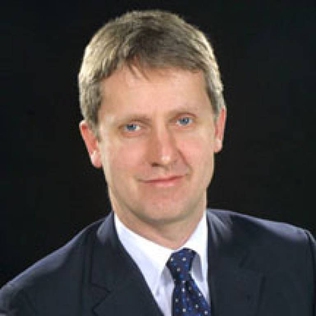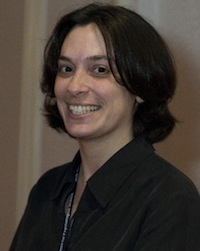In the philosophy of mind, neuroscience, and cognitive science, a mental image is an experience that, on most occasions, significantly resembles the experience of "perceiving" some object, event, or scene but occurs when the relevant object, event, or scene is not actually present to the senses. There are sometimes episodes, particularly on falling asleep and waking up, when the mental imagery may be dynamic, phantasmagoric, and involuntary in character, repeatedly presenting identifiable objects or actions, spilling over from waking events, or defying perception, presenting a kaleidoscopic field, in which no distinct object can be discerned. Mental imagery can sometimes produce the same effects as would be produced by the behavior or experience imagined.
Visual processing is a term that is used to refer to the brain's ability to use and interpret visual information from the world around us. The process of converting light energy into a meaningful image is a complex process that is facilitated by numerous brain structures and higher level cognitive processes. On an anatomical level, light energy first enters the eye through the cornea, where the light is bent. After passing through the cornea, light passes through the pupil and then lens of the eye, where it is bent to a greater degree and focused upon the retina. The retina is where a group of light-sensing cells, called photoreceptors are located. There are two types of photoreceptors: rods and cones. Rods are sensitive to dim light and cones are better able to transduce bright light. Photoreceptors connect to bipolar cells, which induce action potentials in retinal ganglion cells. These retinal ganglion cells form a bundle at the optic disc, which is a part of the optic nerve. The two optic nerves from each eye meet at the optic chiasm, where nerve fibers from each nasal retina cross which results in the right half of each eye's visual field being represented in the left hemisphere and the left half of each eye's visual fields being represented in the right hemisphere. The optic tract then diverges into two visual pathways, the geniculostriate pathway and the tectopulvinar pathway, which send visual information to the visual cortex of the occipital lobe for higher level processing.
Edmund T. Rolls is a neuroscientist and Professor at the University of Warwick.
David J. Heeger is an American neuroscientist, psychologist, computer scientist, data scientist, and entrepreneur. He is a professor at New York University, Chief Scientific Officer of Statespace Labs, and Chief Scientific Officer and co-founder of Epistemic AI.

Nancy Gail Kanwisher FBA is the Walter A Rosenblith Professor of Cognitive Neuroscience in the Department of Brain and Cognitive Sciences at the Massachusetts Institute of Technology and an investigator at the McGovern Institute for Brain Research. She studies the neural and cognitive mechanisms underlying human visual perception and cognition.

Stanislas Dehaene is a French author and cognitive neuroscientist whose research centers on a number of topics, including numerical cognition, the neural basis of reading and the neural correlates of consciousness. As of 2017, he is a professor at the Collège de France and, since 1989, the director of INSERM Unit 562, "Cognitive Neuroimaging".

The fusiform face area is a part of the human visual system that is specialized for facial recognition. It is located in the inferior temporal cortex (IT), in the fusiform gyrus.

Jonathon Stevens "Jon Driver" was a psychologist and neuroscientist. He was a leading figure in the study of perception, selective attention and multisensory integration in the normal and damaged human brain.

Earl Keith Miller is a cognitive neuroscientist whose research focuses on neural mechanisms of cognitive, or executive, control. Earl K. Miller is the Picower Professor of Neuroscience with the Picower Institute for Learning and Memory and the Department of Brain and Cognitive Sciences at Massachusetts Institute of Technology. He is the Chief Scientist and co-founder of SplitSage. He is a co-founder of Neuroblox.
Marlene Behrmann is a Professor in the Department of Ophthalmology at the University of Pittsburgh. She was previously a Professor of Psychology at Carnegie Mellon University. She specializes in the cognitive neuroscience of visual perception, with a specific focus on object recognition.
Visual perception is the ability to interpret the surrounding environment through photopic vision, color vision, scotopic vision, and mesopic vision, using light in the visible spectrum reflected by objects in the environment. This is different from visual acuity, which refers to how clearly a person sees. A person can have problems with visual perceptual processing even if they have 20/20 vision.
Cultural neuroscience is a field of research that focuses on the interrelation between a human's cultural environment and neurobiological systems. The field particularly incorporates ideas and perspectives from related domains like anthropology, psychology, and cognitive neuroscience to study sociocultural influences on human behaviors. Such impacts on behavior are often measured using various neuroimaging methods, through which cross-cultural variability in neural activity can be examined.

In neuroscience, functional specialization is a theory which suggests that different areas in the brain are specialized for different functions.
The Troland Research Awards are an annual prize given by the United States National Academy of Sciences to two researchers in recognition of psychological research on the relationship between consciousness and the physical world. The areas where these award funds are to be spent include but are not limited to areas of experimental psychology, the topics of sensation, perception, motivation, emotion, learning, memory, cognition, language, and action. The award preference is given to experimental work with a quantitative approach or experimental research seeking physiological explanations.
Isabel Gauthier is a cognitive neuroscientist currently holding the position of David K. Wilson Professor of Psychology and head of the Object Perception Lab at Vanderbilt University’s Department of Psychology. In 2000, with the support of the James S. McDonnell Foundation, she founded the Perceptual Expertise Network (PEN), which now comprises over ten labs based across North America. In 2006 PEN became part of the NSF-funded Temporal Dynamics of Learning Center (TDLC).
Biased competition theory advocates the idea that each object in the visual field competes for cortical representation and cognitive processing. This theory suggests that the process of visual processing can be biased by other mental processes such as bottom-up and top-down systems which prioritize certain features of an object or whole items for attention and further processing. Biased competition theory is, simply stated, the competition of objects for processing. This competition can be biased, often toward the object that is currently attended in the visual field, or alternatively toward the object most relevant to behavior.

Melvyn Alan Goodale FRSC, FRS is a Canadian neuroscientist. He was the founding Director of the Brain and Mind Institute at the University of Western Ontario where he holds the Canada Research Chair in Visual Neuroscience. He holds appointments in the Departments of Psychology, Physiology & Pharmacology, and Ophthalmology at Western. Goodale's research focuses on the neural substrates of visual perception and visuomotor control.
Gordon Logan is the Centennial Professor of Psychology at Vanderbilt University. A cognitive and mathematical psychologist, Logan is well known for his work on cognitive control and inhibition of cognitive and motor activity, divided attention and the nature of the human brain’s processing limitations, and the fundamental characterization of attention deficit hyperactivity disorder ADHD. He has also done extensive research on the hierarchical control of skilled copytyping, which he views as a useful model for hierarchically organized complex human skills in general. He collaborates on research that applies mathematical models to neural and behavioral data.

Sharon Thompson-Schill is the Christopher H. Browne Distinguished Professor of Psychology at the University of Pennsylvania in Philadelphia, Pennsylvania. Her research covers the field of biological basis of human cognitive systems, including language, memory, perception, and cognitive control, and the relationships between these systems. As of 2023, she has produced more than 190 scientific publications, which collectively have been cited over 18,000 times.
James Van Loan Haxby is an American neuroscientist. He currently is a professor in the Department of Psychological and Brain Sciences at Dartmouth College and was the Director for the Dartmouth Center for Cognitive Neuroscience from 2008 to 2021. He is best known for his work on face perception and applications of machine learning in functional neuroimaging.







